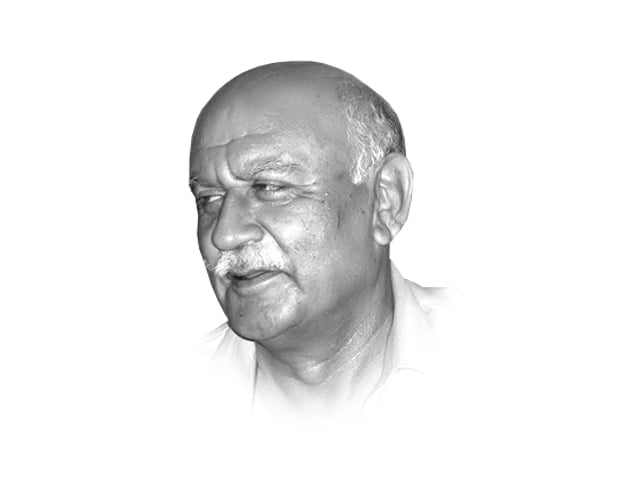
In our days as young officers, counter-guerrilla warfare was taught at the tactical levels at the Infantry School and the Command and Staff College, both in Quetta, but as a peripheral subject. We were also taught how to conduct raids and ambushes — while these are the bread and butter of guerrilla warriors, they are also employed in the conduct of conventional warfare. Quite obviously, we were also taught anti-raid and anti-ambush drills in case we were ambushed or raided by the enemy. From the foregoing, it is obvious that while guerrilla operations are not the primary function of regular armed forces, these were always taught for use as a part of conventional warfare. Consequently, CGOs are also a military function.
At this stage, it becomes important to point out the huge difference between CGOs conducted within one’s own territory and those which have been conducted against citizens of another country. If you recall the first article I wrote on the subject, I emphasised that though military operations were an important part of it, counter-insurgency (COIN) was essentially a non-military function. The reason is that COIN seeks to redress socio-politico-economic grievances of insurgents so as to win their hearts and minds. While this applies to all CGOs, for obvious reasons, it is of far greater importance to those soldiers and their leaders who are fighting their own peoples. In Afghanistan, Iraq, Vietnam, or numerous South American countries where the US operated in CGOs, its concern for collateral damage has been very nominal. The mere use of the term ‘collateral damage’ suffices to explain how acceptable these losses are to the US. But when governments order CGOs to be undertaken against their own citizens both the government and the security forces are fully conscious that every single innocent life lost leaves a bereaved and aggrieved family — thus multiplying the numbers of insurgents instead of appeasing them.
Perhaps the best way to explain the dilemma of state security forces is to compare ceasefire violations along the Line of Control (LoC) in Kashmir. The diplomatic position of both countries is (to over-simplify them) that both claim Kashmir in its entirety. However, when India violates the LoC it is totally unconcerned about who is actually killed, soldiers or civilians. Pakistan cannot afford to be indiscriminate in its response and, therefore, restricts itself solely to Indian security forces. This knowledge of being at war with misguided elements of its own peoples seriously restricts the ‘liberty of action’ — an essentially military term — available to troops and commanders. This is why the quality and quantity of the force applied against domestic insurgents must be very selectively and discriminately determined; thus the unusually high dependence on accurate and timely intelligence. While accuracy of intelligence is self-explanatory, being timely implies that it must be good for the duration of time required to plan and act on it. Accurate and timely intelligence is priceless in this war.
When I wrote on our operations in South Waziristan and Swat, I explained how meticulously and detailed were planning preparations. I also wrote on a less well-noticed matter — the efforts made by the army to get innocent civilians either out of the target zone or to be able to identify them as non-combatants. Only then could it resort to the use of weapons, like artillery, and platforms, like the ones provided by aircraft. Even then, while using such weapons and platforms, the military employed only precision weapons and munitions to ensure minimal loss of innocent lives. There are very serious repercussions to such measures which warn the insurgents of when operations are going to begin, i.e., a) they have ample warning to escape or to plan their defence/offence; and b) they are aware of the acts which the army has announced it will consider as hostile and the citizens it will recognise as non-combatants. Insurgents, too, can benefit from these announcements and fade among non-combatants for as long as they like. But the military deliberately has to make all efforts to minimise the so-called ‘collateral damage’ as much as possible.
Published in The Express Tribune, November 18th, 2015.
Like Opinion & Editorial on Facebook, follow @ETOpEd on Twitter to receive all updates on all our daily pieces.












COMMENTS (7)
Comments are moderated and generally will be posted if they are on-topic and not abusive.
For more information, please see our Comments FAQ